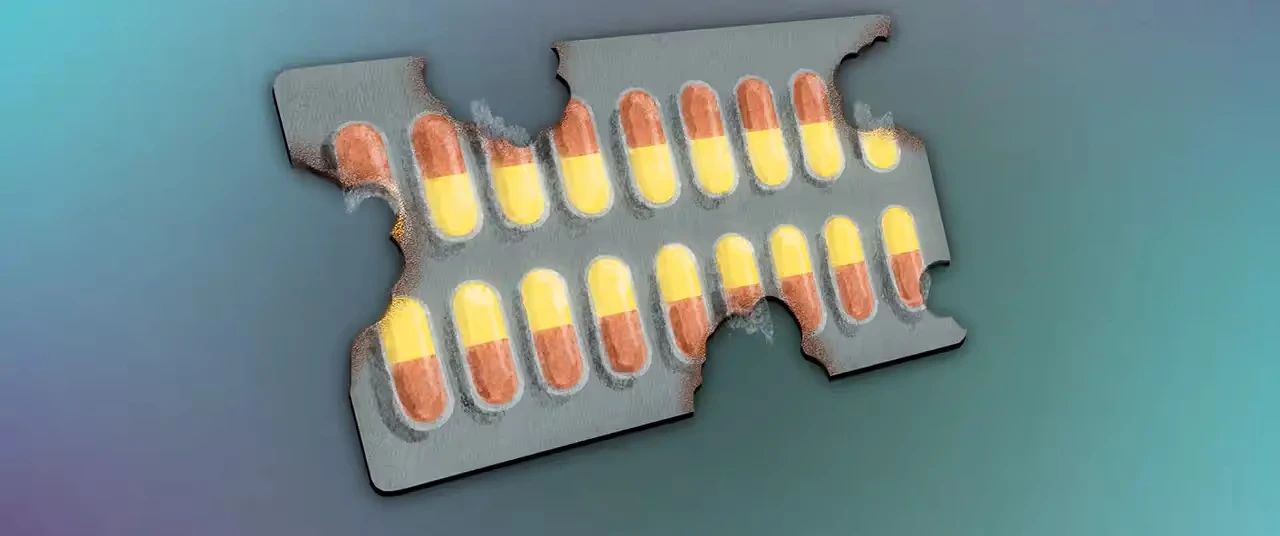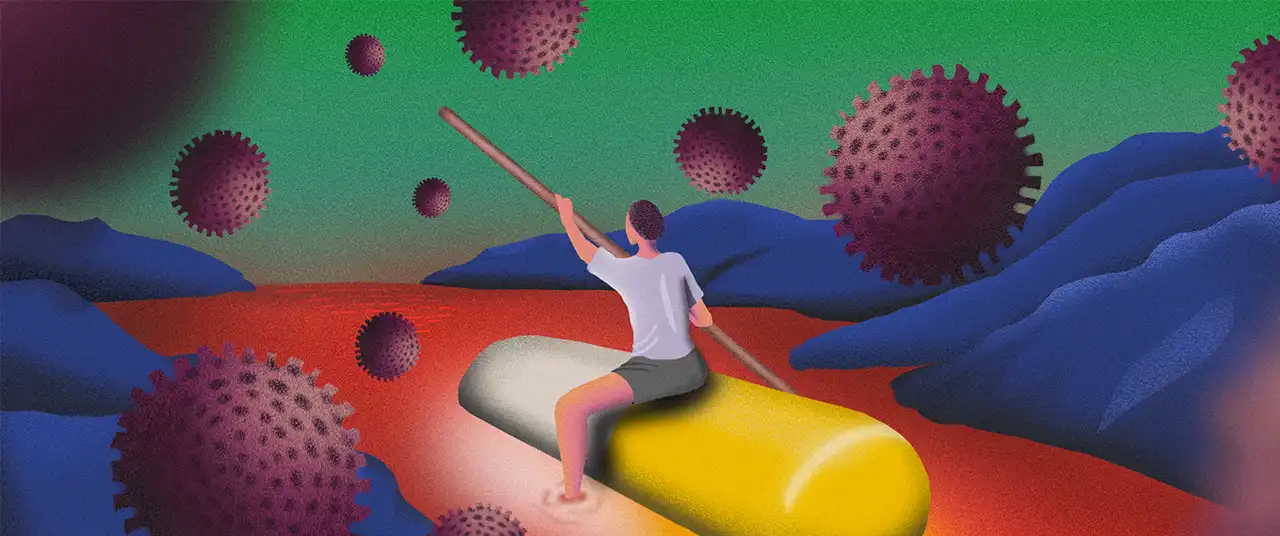What is antimicrobial resistance, and how did we get here






Let’s imagine a scenario where you and your friends are talking about inventions that have changed the course of human life. And you, obviously, are thankful for hundreds of them. Mobile phones? yes. Electricity? Always. The internet? Every waking minute. But what are the chances of one of you bringing up antibiotics? Slim at best. An average person may not count antibiotics among the list of discoveries that they are grateful for. Call it apathy or ignorance, it's one of those things we take for granted. It is as if this miracle drug has been around all along. After all, every time you are down with flu, you are handed a generous dose– prescribed or not.
But how did this discovery, which revolutionised modern medicine, become so easily accessible? Let’s take a look.
The first antibiotic, the mighty penicillin, was discovered in 1928 (by Scottish microbiologist Alexander Fleming).
Fun story: While researching Staphylococcus bacteria in his laboratory, Alexander Fleming noticed that a petri dish containing the bacteria had become contaminated with mould. But the area around the mould was free of bacteria. On closer examination, he identified the mould as Penicillium notatum and realised it was producing a substance that killed the bacteria. He named this substance penicillin.

Before this breakthrough, routine surgeries carried life-threatening risks due to fatal infections, organ transplants were unthinkable, and even common infections like UTIs posed a serious risk of death. Everyday activities like gardening or shaving required caution, as a small cut could lead to serious health complications. Simply put, without antibiotics, modern medicine would have been at a standstill.
The magnitude of Fleming’s discovery wasn’t immediately clear even after he published his findings in 1929. At the time, extracting and purifying penicillin in large quantities was challenging, limiting its practical use. The turning point came during World War II, as the need to treat bacterial infections in wounded soldiers became a top priority. Scientists Howard Florey and Ernst Boris Chain developed a method for mass production, and by 1944, penicillin was being manufactured at scale, turning it into a viable antibiotic. As it saved thousands of lives, penicillin quickly gained widespread acclaim.
Cornerstone of modern medicine
The miracle drug transformed healthcare as it became the standard treatment for various bacterial diseases. But we are not here to thank our stars for Fleming’s accidental discovery, which became one of the greatest breakthroughs in medical history. But to discuss a bigger problem. Antimicrobial Resistance (AMR)— a situation that the World Health Organization has recognised as one of the top 10 global public health threats.
For the uninitiated, AMR is when bacteria, viruses, fungi, and parasites evolve and develop the ability to resist the effects of antimicrobial drugs such as antibiotics, antivirals, and antifungals, which are intended to kill or inhibit them. Their ability to resist would mean that infections caused by these microorganisms become harder to treat, leading to prolonged illnesses, increased mortality, and higher medical costs.
Such a scenario can be dangerous on so many levels. A common infection such as pneumonia, which is now easily treatable may no longer respond to it, leading to prolonged illness or even death. Surgeries could become riskier because of increased chances of untreatable infections. Moreover, resistant infections could mean longer hospital stays, more expensive medications, and multiple treatments.
We were warned
If you are wondering how a lifesaving invention went on to become a threat to mankind in a matter of decades, the answer is simple. Misuse and overuse. The key contributor to AMR development is believed to be the misuse of antibiotics in humans, animals, and even agriculture.
In his 1945 Nobel lecture, Fleming expressed concern about the improper use of penicillin. Specifically how low doses or incomplete treatments could give bacteria a chance to mutate and become resistant.
He had famously said: "There is the danger that the ignorant man may easily underdose himself and, by exposing his microbes to non-lethal quantities of the drug, make them resistant."
And this is precisely what has been happening since.
Overprescription, failure to complete courses, and the use of antibiotics in livestock for growth promotion have contributed to the rapid development of AMR.
By the ‘60s and ‘70s, scientists began to notice that bacteria were evolving to resist antibiotics like penicillin, leading to the development of newer antibiotics. However, the misuse of these drugs continued, and the development of AMR accelerated.
But it’s hard to keep up with this mutation. Developing newer antibiotics is inherently difficult. As bacteria constantly evolve, finding new compounds that can kill or inhibit them without harming human cells is a complex process. Additionally, developing new antibiotics requires heavy financial investment in research and clinical trials. Besides, the process of bringing a new antibiotic to market involves stringent regulatory hurdles and testing phases, which can take up to a decade or more. This discourages many pharmaceutical companies from investing in antibiotic development. At the same time, antibiotics continue being prescribed for viral infections (where they are ineffective) and are widely used in agriculture to promote animal growth.
As a result of the widespread misuse, superbugs or multidrug resistance organisms (MDROs) have evolved to survive treatment with multiple antibiotics. A few notorious examples include MRSA (Methicillin-resistant Staphylococcus aureus): Resistant to several types of antibiotics, including methicillin; VRE (Vancomycin-resistant Enterococci): Bacteria that have become resistant to vancomycin, often causing infections in hospitals; CRE (Carbapenem-resistant Enterobacteriaceae): Resistant to carbapenems, one of the last lines of defence in treating bacterial infections and Multidrug-resistant Tuberculosis (MDR-TB): A form of tuberculosis resistant to first-line antibiotics like isoniazid and rifampin. These superbugs cause severe infections that are difficult to treat, leading to longer hospital stays, higher medical costs, and increased mortality rates.
Time to act is now
In the last few decades, very few new antibiotics have been approved, with many belonging to existing classes rather than entirely new types of drugs. In fact, between 1980 and 2000, no new major classes of antibiotics were discovered. While there have been a few new drugs approved recently, they are often met with rapid resistance from bacteria.
Efforts to boost antibiotic development have included government incentives, public-private partnerships, and global initiatives like the WHO’s Global Action Plan on AMR. Yet, the number of new antibiotics remains limited, falling short of what’s needed to tackle the AMR crisis.
%2520copy.avif)
In short, without new antibiotics, we are at risk of entering a post-antibiotic era where even minor infections or routine surgeries could become life-threatening. The race to develop new antibiotics and alternative treatments such as bacteriophage therapy (treatment for bacterial infections that uses viruses called bacteriophages to target and inactivate bacteria) is critical to avoid this scenario.
The slow pace of antibiotic development, the rapid evolution of resistant bacteria, and the prevalence of superbugs mean that we are running out of effective treatments for infections that were once easily cured. If no urgent action is taken, even routine medical procedures (think surgeries, childbirth, and cancer treatments) could become life-threatening.
Tackling AMR requires coordinated global efforts—reducing the misuse of antibiotics, promoting responsible use in healthcare and agriculture, funding research for new treatments, and improving infection prevention measures. The cost of inaction is too high, as we risk entering a post-antibiotic era where modern medicine as we know it could be undone.
{{quiz}}
Explore other topics
References




.avif)






